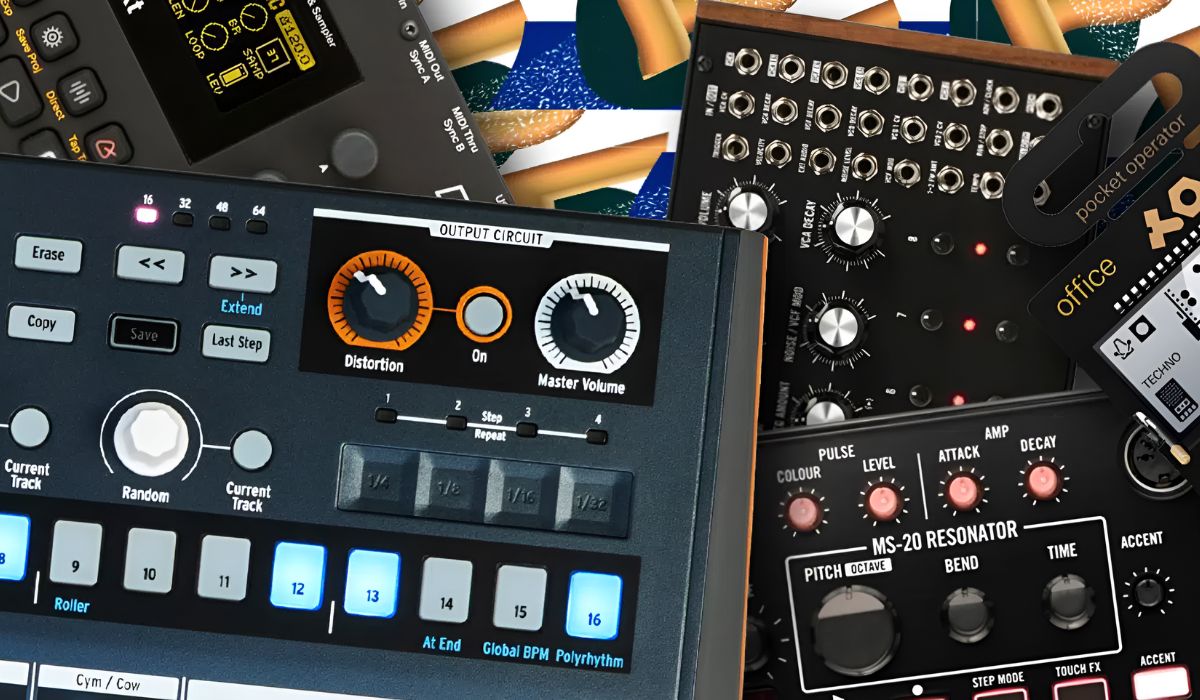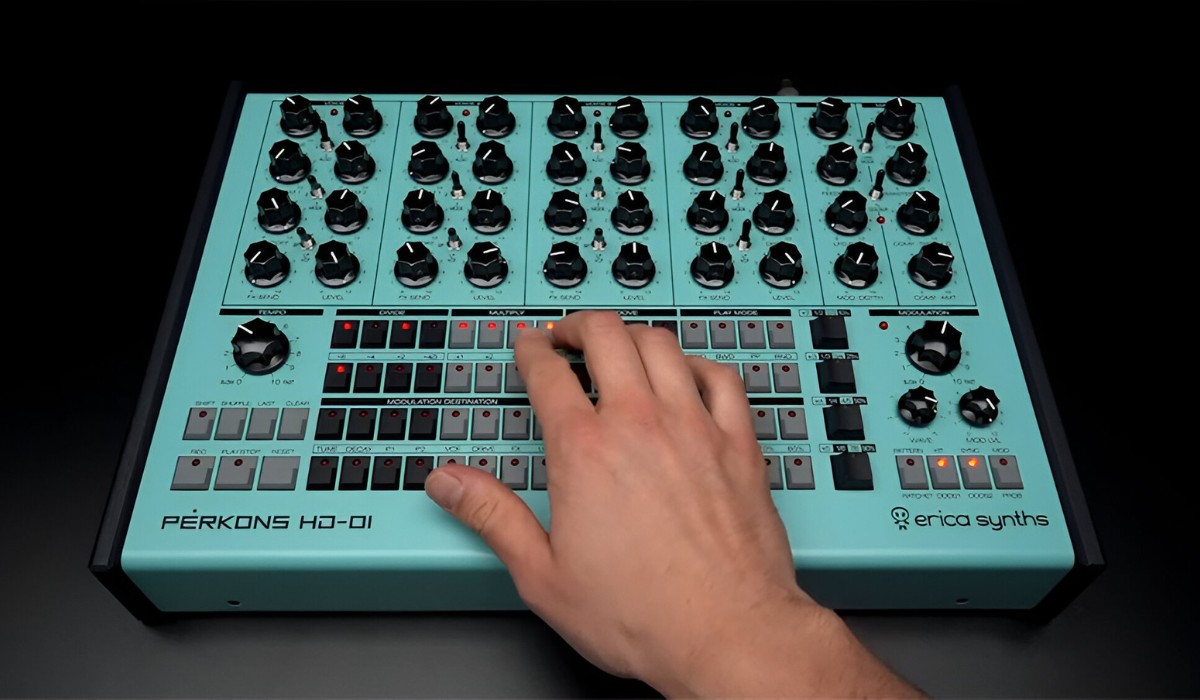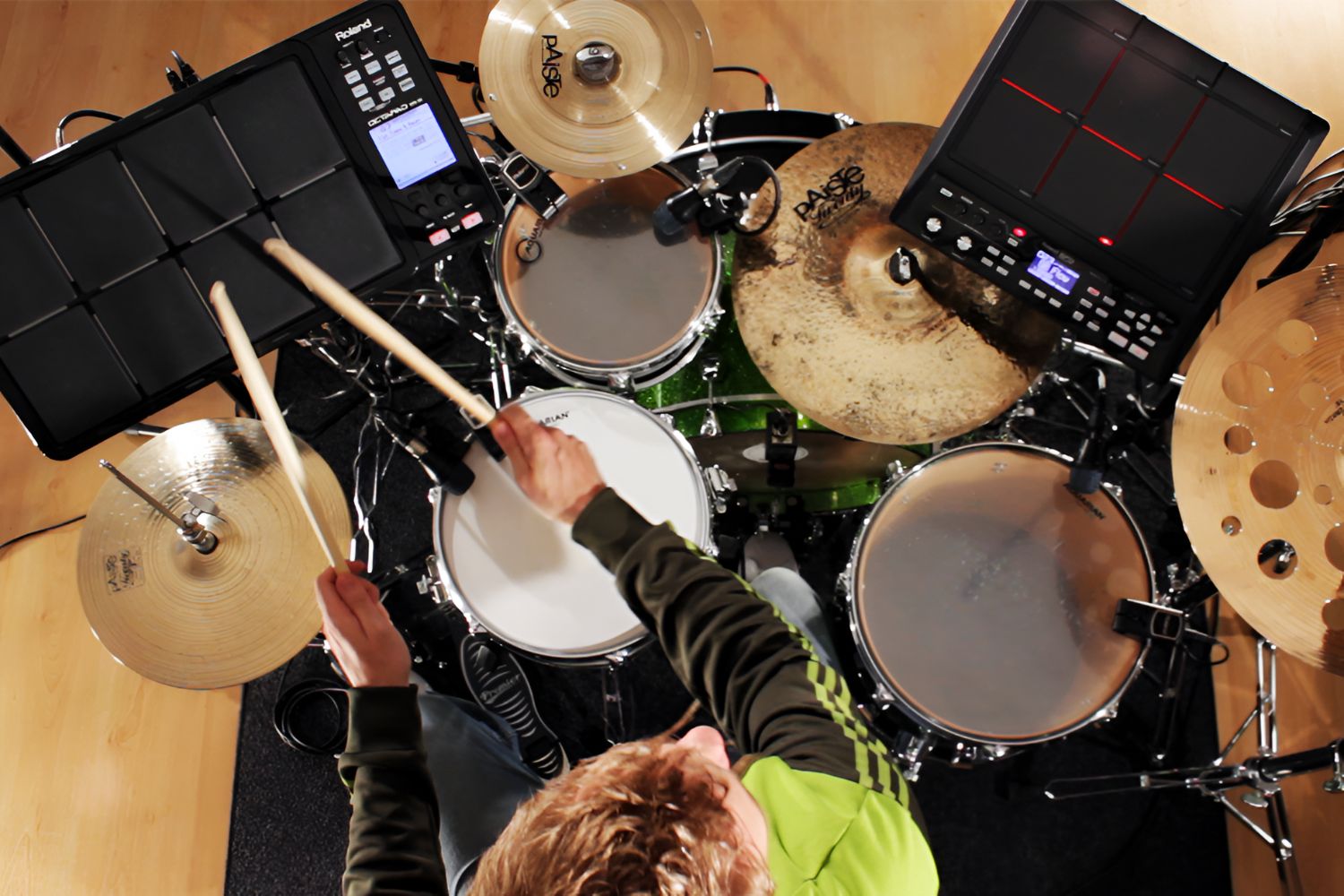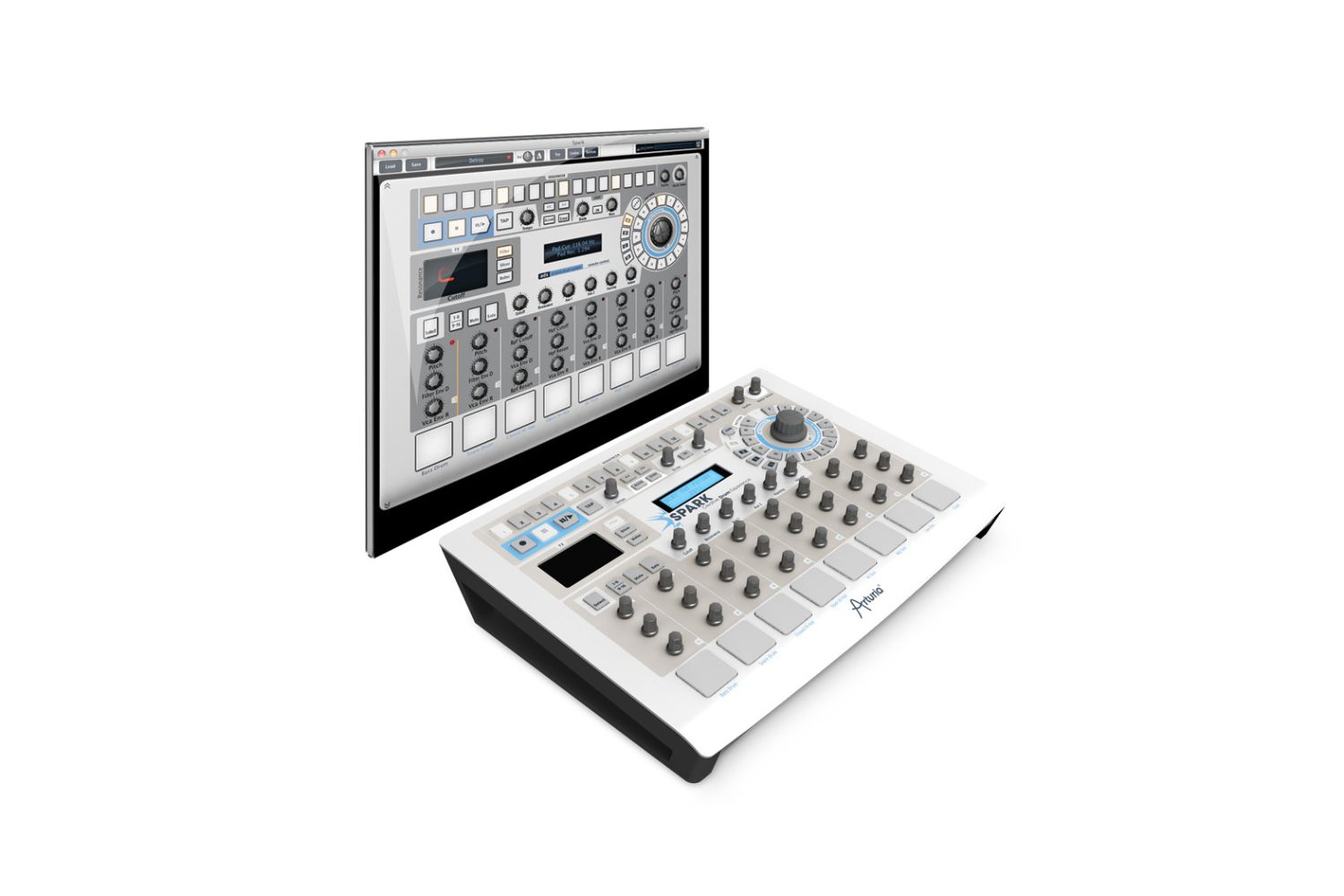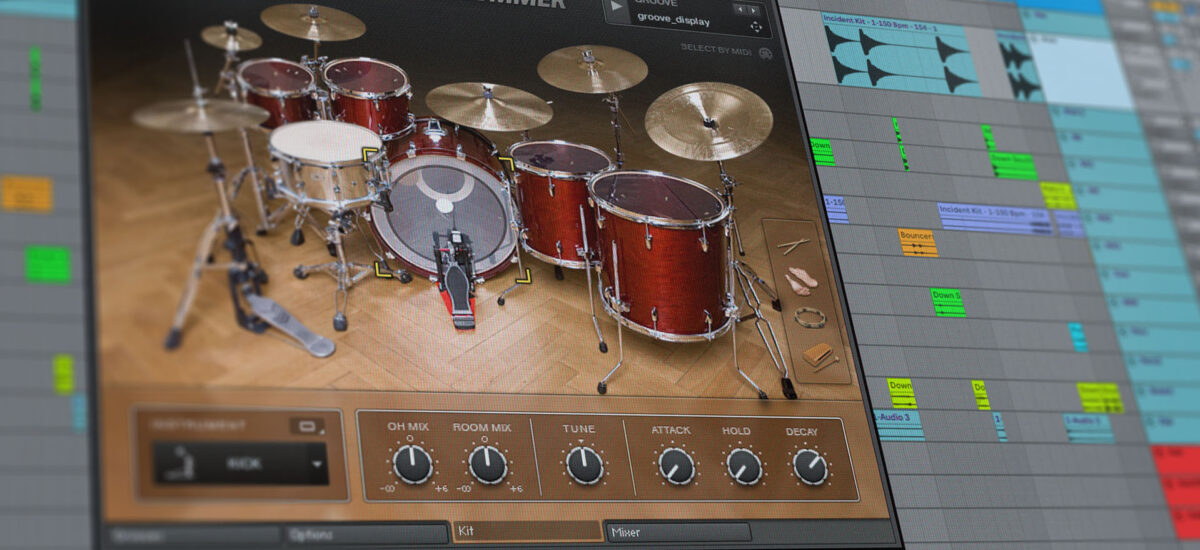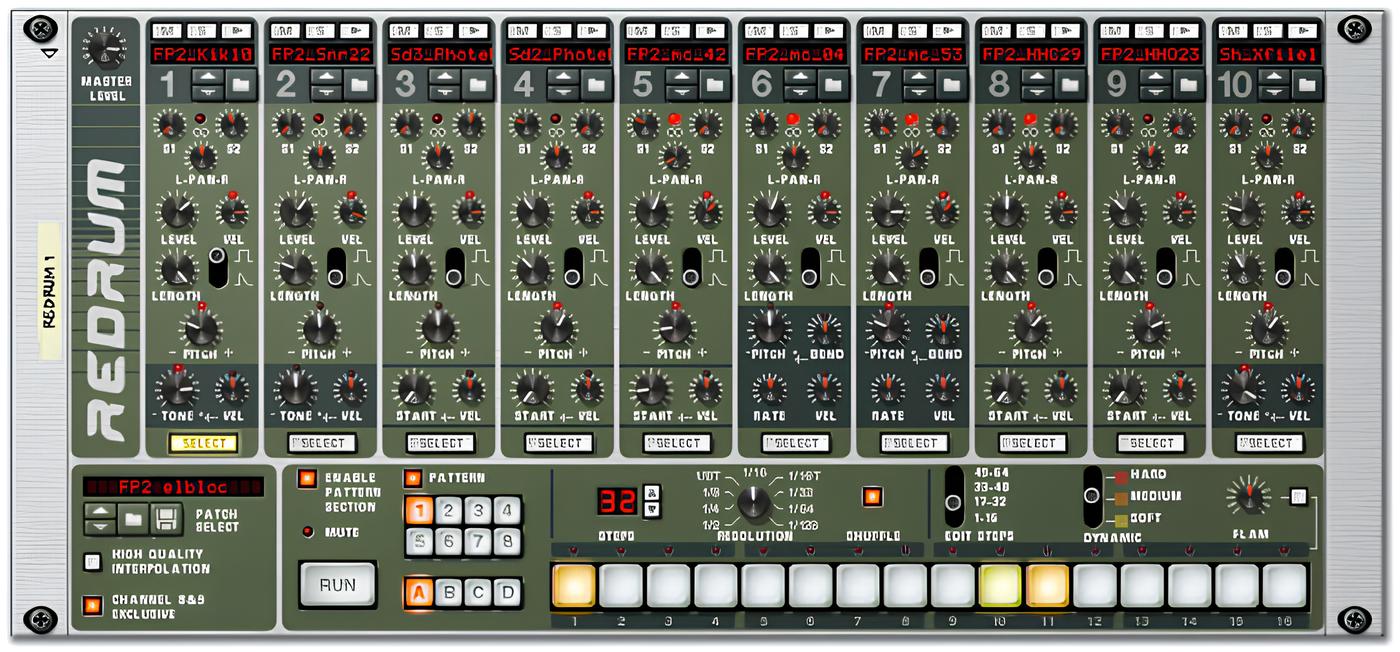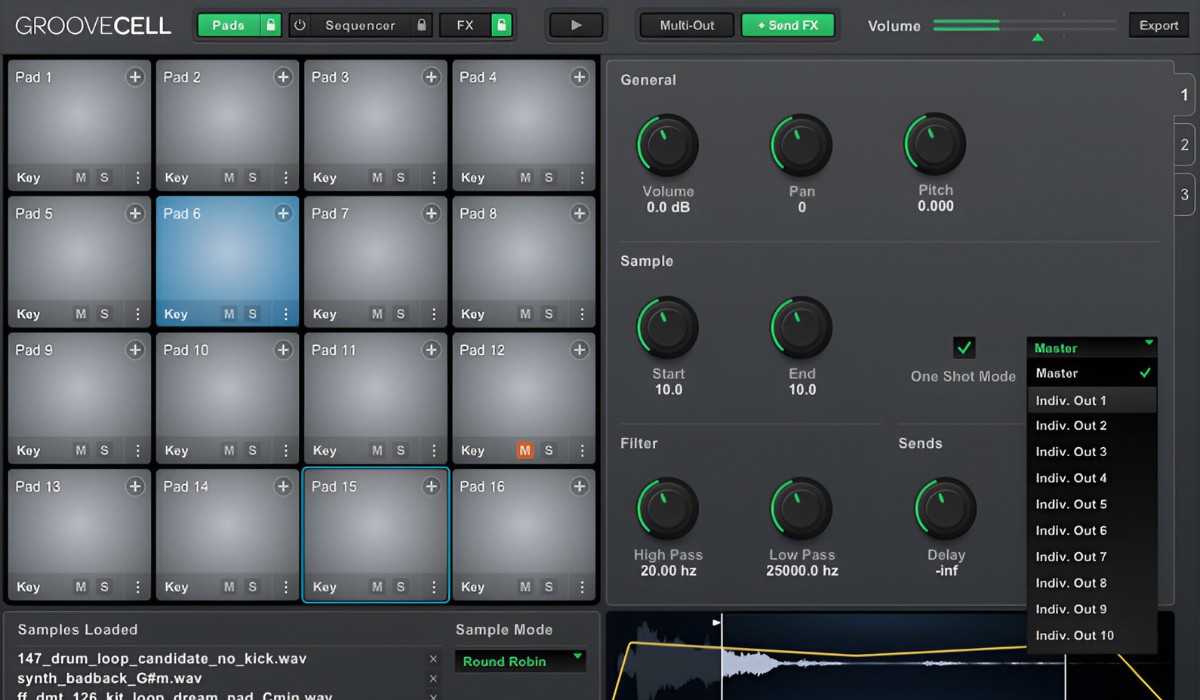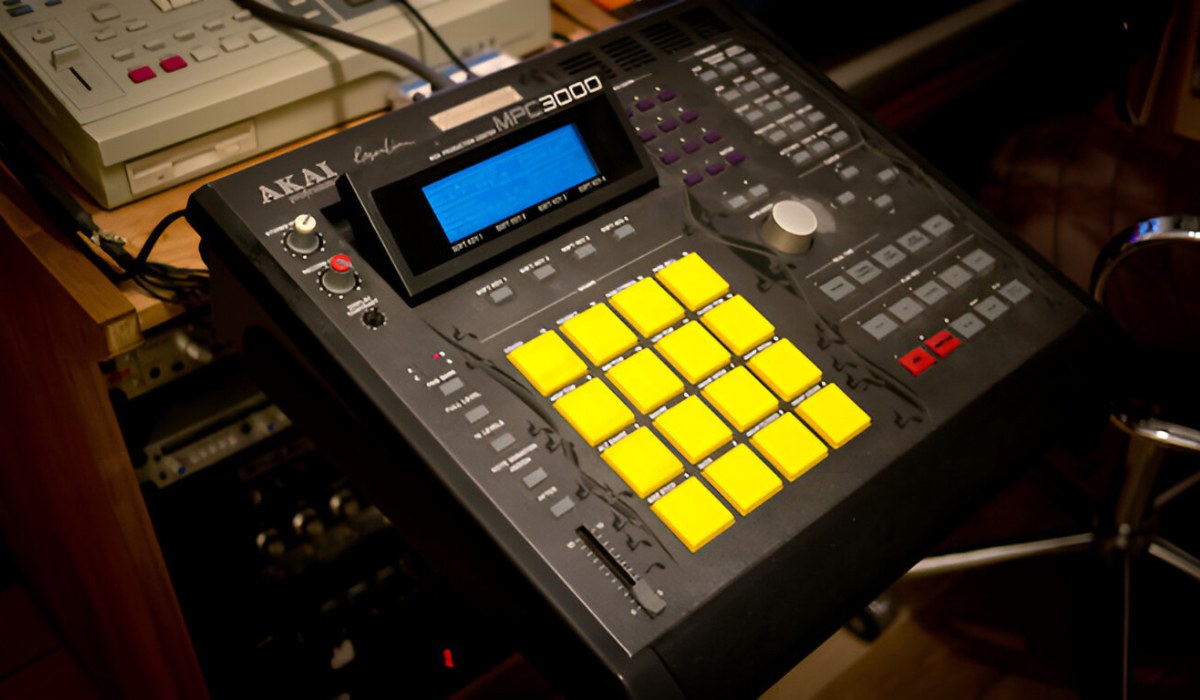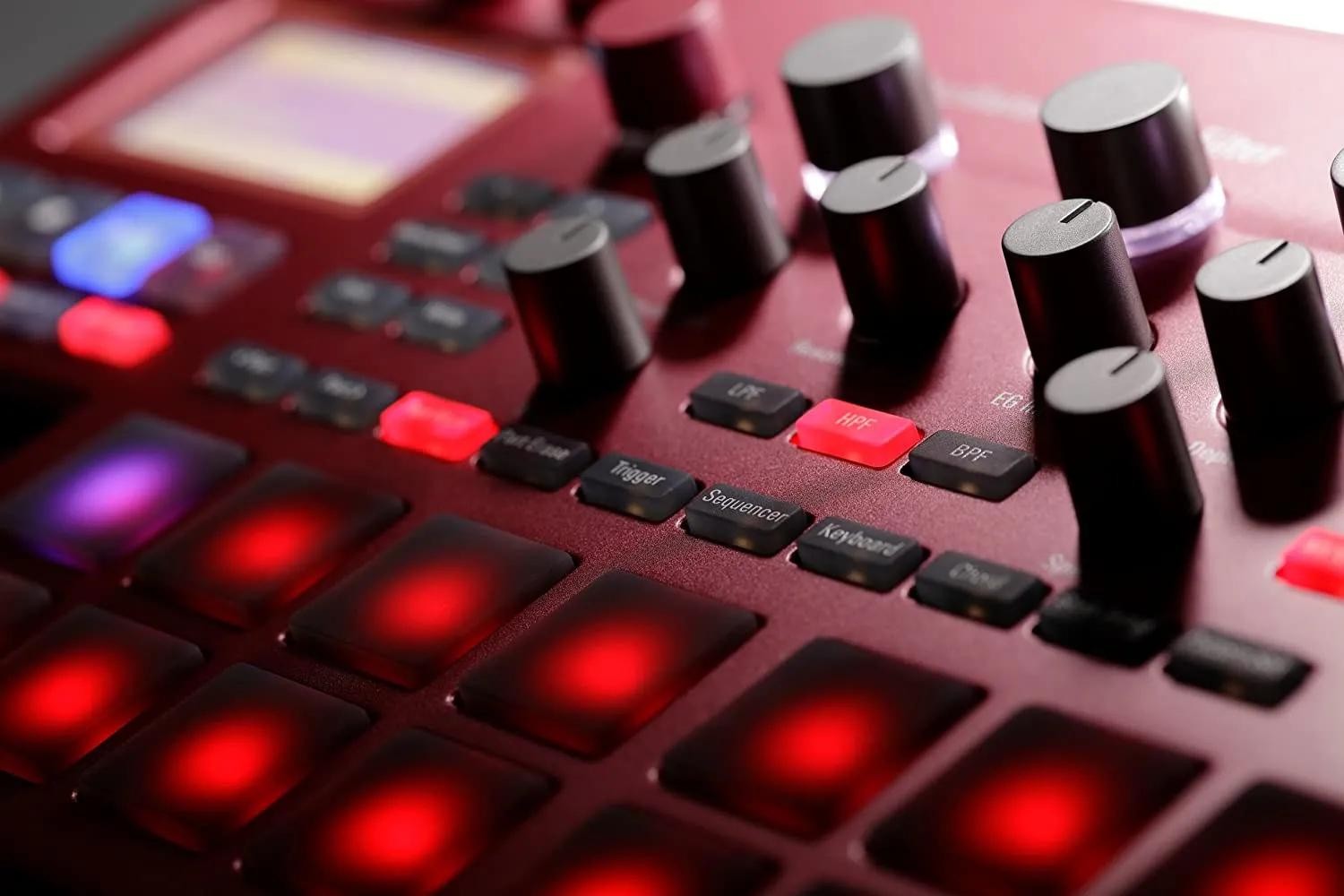Introduction
When it comes to creating music with a distinct and infectious rhythm, the swing on a drum machine plays a pivotal role. The swing feature, often overlooked by novice music producers, can elevate a track from sounding rigid and mechanical to being infused with a natural and irresistible groove. Understanding the significance of swing on a drum machine is essential for any music creator looking to craft compelling and engaging beats.
The concept of swing in music dates back to the jazz era, where musicians introduced a syncopated rhythm that defied the strict adherence to a metronomic beat. This deviation from the rigid timekeeping of traditional music gave rise to a new and infectious feel that resonated with audiences and became a fundamental element in various music genres.
In this article, we will delve into the intricacies of swing on a drum machine, exploring its definition, importance in music production, and its ability to infuse drum patterns with groove. By examining famous tracks that utilize swing and providing practical tips for leveraging this feature effectively, we aim to equip music producers with the knowledge and insight to harness the power of swing in their creations. So, let's embark on a rhythmic journey to uncover the significance of swing on a drum machine and its impact on music production.
What Is Swing on a Drum Machine?
Swing on a drum machine refers to the manipulation of rhythmic timing to introduce a subtle, yet impactful, groove into the music. It emulates the natural, off-kilter feel of live drumming, allowing the beats to breathe and sway, rather than adhering strictly to a rigid, metronomic grid. This deviation from strict quantization is what gives swing its distinctive and infectious feel.
At its core, swing alters the timing and emphasis of individual beats within a musical sequence. Rather than each beat being evenly spaced, swing introduces a slight delay or advance to certain beats, creating a syncopated rhythm that is both compelling and organic. This deviation from perfect timing is often quantified as a percentage, with 50% representing no swing (straight, rigid timing) and higher percentages introducing increasing levels of swing.
When applied to a drum machine, the swing function adjusts the timing of the programmed beats, infusing them with a human-like feel that is essential for creating a sense of groove and movement in the music. This feature is particularly valuable in electronic music production, where the fusion of synthetic sounds with natural rhythms is a hallmark of captivating and danceable tracks.
Swing on a drum machine can be likened to the subtle variations in timing and emphasis that occur when a skilled drummer performs, adding an element of expressiveness and fluidity to the music. By understanding and harnessing the power of swing, music producers can breathe life into their drum patterns, elevating them from mechanical sequences to dynamic and engaging grooves that captivate listeners.
The Importance of Swing in Music
Swing in music holds immense significance as it serves as a bridge between the mechanical precision of digital production and the organic, human feel of live performance. Its role extends beyond mere rhythmic manipulation, playing a crucial part in shaping the emotional impact and danceability of a musical composition.
One of the primary reasons swing is vital in music production is its ability to inject soul and character into the rhythm. By introducing subtle timing variations, swing mimics the expressive nuances of live drumming, infusing the music with an irresistible groove that resonates with the audience on a visceral level. This humanizing effect is especially valuable in genres such as funk, jazz, and hip-hop, where the infectious feel of the rhythm is integral to the overall vibe of the track.
Furthermore, swing contributes to the danceability and fluidity of the music. By deviating from rigid quantization, the slight delays and advances introduced by swing create a dynamic interplay between the beats, prompting natural body movement and enhancing the overall listening experience. This fluidity is particularly evident in genres like house and techno, where the pulsating, hypnotic grooves are synonymous with the genre’s allure.
Moreover, swing fosters a sense of authenticity and imperfection in the music, paradoxically enhancing its appeal. In a world inundated with pristine, digitally polished sounds, the subtle deviations introduced by swing serve as a reminder of the human element in music production, establishing a connection with the listener on a subconscious level. This authenticity contributes to the emotional resonance of the music, making it more relatable and engaging.
Ultimately, the importance of swing in music lies in its transformative impact on the rhythm, feel, and emotional depth of a musical composition. By incorporating swing, music producers can transcend the confines of rigid quantization, infusing their creations with an organic, infectious groove that captivates listeners and elevates the overall sonic experience.
How Swing Can Add Groove to Drum Machine Patterns
The addition of swing to drum machine patterns is akin to infusing them with a captivating sense of groove and fluidity. By introducing subtle timing variations, swing elevates the rhythmic elements from rigid and predictable sequences to dynamic, expressive grooves that beckon the listener to move and engage with the music on a deeper level.
One of the primary ways swing enhances drum machine patterns is by introducing a sense of human-like feel and imperfection. Rather than adhering strictly to a metronomic grid, the slight timing adjustments emulate the nuances of live drumming, creating an organic and infectious rhythm that resonates with the audience. This infusion of soul and character is essential for crafting compelling and relatable drum patterns across various music genres.
Furthermore, swing fosters a natural ebb and flow within drum machine patterns, mimicking the dynamic interplay between beats in live performances. This fluidity is instrumental in creating a sense of movement and groove, prompting listeners to sway and dance to the infectious rhythm. Whether in the context of electronic dance music or live band performances, the addition of swing breathes life into drum machine patterns, transforming them from static sequences to immersive and engaging grooves.
Moreover, swing can add a layer of expressiveness and depth to drum machine patterns, allowing for the manipulation of emphasis and phrasing within the rhythm. By subtly shifting the timing of specific beats, music producers can imbue their drum patterns with a sense of tension and release, creating a dynamic and compelling musical narrative that captivates the listener’s attention.
Ultimately, the incorporation of swing into drum machine patterns serves as a catalyst for infusing the music with groove, character, and movement. It transcends the confines of rigid quantization, offering music producers a versatile tool to breathe life into their compositions and evoke an irresistible rhythmic energy that resonates with audiences across diverse musical landscapes.
Examples of Famous Tracks Using Swing on Drum Machines
The utilization of swing on drum machines has left an indelible mark on the sonic landscape of numerous iconic tracks across various music genres. From timeless classics to contemporary hits, the incorporation of swing has played a pivotal role in shaping the rhythmic character and infectious groove of these renowned compositions.
One notable example of swing’s impact can be found in the realm of hip-hop, particularly in the work of legendary producer J Dilla. His seminal track “Don’t Cry” showcases the masterful use of swing, with the off-kilter, laid-back groove becoming a hallmark of his signature sound. The deliberate manipulation of timing on the drum machine imbues the track with a mesmerizing, head-nodding rhythm that has influenced countless producers and artists.
In the realm of electronic music, the influence of swing is exemplified in the genre of house music, where tracks like “Promised Land” by Joe Smooth have captivated audiences with their infectious and soulful grooves. The subtle swing applied to the drum machine patterns creates a dynamic and pulsating rhythm that is synonymous with the genre’s dancefloor appeal, demonstrating the transformative power of swing in electronic music production.
Furthermore, the impact of swing extends to the realm of jazz, where the track “Take Five” by the Dave Brubeck Quartet stands as a timeless testament to the mesmerizing allure of swing. The unconventional 5/4 time signature, coupled with the innate swing feel of the drum machine patterns, creates a hypnotic and engaging rhythm that has solidified its place as a jazz standard, showcasing the versatility of swing across diverse musical styles.
Another influential example can be found in the realm of funk, with James Brown’s “Funky Drummer” serving as a quintessential demonstration of the infectious groove facilitated by swing. The interplay between the drum machine patterns and the subtle timing variations creates a compelling and danceable rhythm that has left an indelible mark on the evolution of funk music, underscoring the pivotal role of swing in shaping the rhythmic foundation of iconic tracks.
These examples serve as a testament to the enduring impact of swing on drum machines, showcasing its ability to shape the rhythmic character and infectious groove of timeless compositions across diverse musical genres. From hip-hop to house, jazz to funk, the incorporation of swing has left an indelible mark on the sonic landscape, underscoring its significance in music production and its ability to captivate audiences with its irresistible rhythmic energy.
Tips for Using Swing Effectively on Drum Machines
Mastering the art of using swing on drum machines can significantly enhance the rhythmic depth and infectious groove of music productions. By leveraging this feature effectively, music producers can infuse their compositions with a captivating sense of movement and soul. Here are some valuable tips for harnessing the power of swing to elevate drum machine patterns:
- Experiment with Swing Intensity: When applying swing to drum machine patterns, experiment with varying degrees of intensity to find the sweet spot that complements the track’s vibe. Subtle swing percentages can add a hint of groove, while higher percentages can introduce a pronounced, off-kilter feel. Tailoring the swing intensity to suit the musical context is essential for achieving the desired rhythmic impact.
- Syncopate Select Drum Elements: Rather than applying swing uniformly across all drum elements, consider selectively syncopating specific components, such as hi-hats or snares, to create intricate rhythmic interplay. This approach can add depth and dynamics to the drum patterns, enhancing their overall complexity and groove.
- Emulate Human Drumming: Use swing to emulate the nuanced timing variations inherent in live drumming performances. By infusing the drum machine patterns with human-like imperfections, producers can breathe life into the rhythm, creating an organic and engaging feel that resonates with listeners.
- Layer Swing with Live Recordings: For an added dimension of authenticity, consider layering swing-infused drum machine patterns with live drum recordings. This hybrid approach can yield compelling results, blending the precision of electronic production with the organic expressiveness of live performance.
- Contextualize Swing for Genre: Tailor the application of swing to align with the stylistic conventions of the genre. Different musical genres may necessitate varying degrees of swing and rhythmic sensibilities. Understanding the genre-specific nuances of swing application is crucial for achieving an authentic and compelling rhythmic aesthetic.
By incorporating these tips into the music production process, producers can harness the transformative potential of swing on drum machines, elevating their compositions with captivating grooves and rhythmic dynamism. Through experimentation and a keen understanding of rhythmic nuances, the application of swing can breathe life into drum machine patterns, infusing them with an infectious and soul-stirring energy.
Conclusion
Swing on a drum machine stands as a dynamic and indispensable tool for music producers, offering a gateway to infuse rhythm with groove, character, and soul. Its ability to emulate the organic, off-kilter feel of live drumming while maintaining the precision of electronic production makes it a cornerstone of compelling and engaging music creation.
Throughout this exploration, we’ve uncovered the nuanced intricacies of swing, from its role in shaping the emotional impact and danceability of music to its transformative influence on drum machine patterns. By examining famous tracks that harness the power of swing and providing practical tips for its effective utilization, we’ve unveiled the profound impact of this rhythmic element on the sonic landscape.
From the infectious grooves of hip-hop to the pulsating rhythms of house music, swing has left an indelible mark on iconic tracks across diverse genres, underscoring its versatility and enduring relevance in music production. Its ability to foster a sense of movement, authenticity, and imperfection within the rhythm has solidified its place as a vital component of compelling and relatable music.
As music producers continue to explore the rhythmic possibilities afforded by swing, it is imperative to embrace experimentation, innovation, and a keen understanding of genre-specific nuances. By leveraging swing effectively, producers can transcend the confines of rigid quantization, infusing their compositions with an irresistible rhythmic energy that captivates audiences and elevates the sonic experience.
In essence, swing on a drum machine transcends its technical function, embodying the soulful essence of rhythm and the infectious allure of groove. Its enduring significance in music production serves as a testament to its transformative power, offering a rhythmic canvas upon which producers can craft compelling and emotive musical narratives.
As music continues to evolve, swing remains a timeless and indispensable tool, enriching compositions with its organic, human-like feel and captivating rhythmic dynamism. It is through the artful application of swing that music producers can breathe life into their creations, forging a profound connection with listeners through the irresistible power of rhythm.







